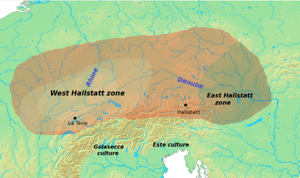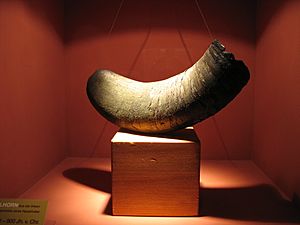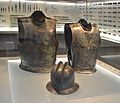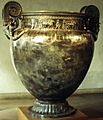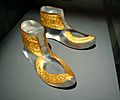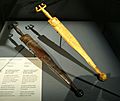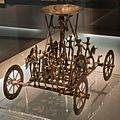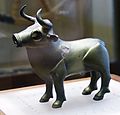Hallstatt culture facts for kids
The Hallstatt culture was an important group of people who lived in Europe a very long time ago. They are named after a town called Hallstatt in Austria. This is where the first ancient objects from their time were found. The Hallstatt culture existed from about 1200 BC to 275 BC.
People who study history can tell apart different periods of the Hallstatt culture. They do this mainly by looking at the types of brooches (decorative pins) that were used. These brooches changed quickly, which helps experts guess how old a site is.
You can find places where the Hallstatt people lived across a wide area. This includes parts of France, Switzerland, Germany, Austria, Slovenia, Croatia, Hungary, Slovakia, and Moravia.
Life in the Hallstatt Culture
During the Hallstatt period, society started to become more organized. People began to live in a hierarchy, meaning some people had more power or importance than others. We know this from the things found in their graves, like at a place called Magdalenenberg.
Before this time, in the Bronze Age, people often lived in large villages. But when iron became available, things changed. Iron was a new and important material. This also changed how trade routes worked.
A New Upper Class
With these changes, a new group of powerful people, an "upper class," appeared. Unlike before, these wealthy people often lived in big houses in the countryside. This was a way to show off their power and wealth.
Burial Customs
The way people buried their dead also changed. At first, they often used cremation, which is burning the body. Later, they started burying bodies in sarcophagi, which are special stone coffins. The new upper class used their riches to buy fancy items. Many of these goods came from the Mediterranean region.
Hallstatt culture: the real thing. [1]
Images for kids
-
A watercolour painting showing a cemetery dig at Hallstatt.
-
The Vix palace at Mont Lassois, France.
-
A fibula brooch decorated with animal figures.
-
A sword hilt inlaid with ivory and amber.
-
A wagon wheel hub from the Vix Grave.
-
An amber necklace from the Magdalenenberg grave.
-
Gold bracelets from Sainte-Colombe-sur-Seine.
-
The Vix krater, a large vessel imported from Greece.
-
A detail from the Vače situla in Slovenia.
See also
 In Spanish: Cultura de Hallstatt para niños
In Spanish: Cultura de Hallstatt para niños


